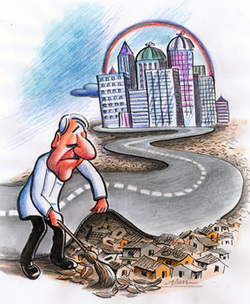AP Human Geography Syllabus Course Overview

Organization of Course
In this course students will meet four times a week for 60 minute periods. Students will maintain a unit specific notebook or file during the course. The notebooks will include activities, vocabulary, key concepts, and questions for each unit. Students must be prepared to take on a heavy reading and writing load throughout the year and will be required to do some kind of homework almost every evening. Students will maintain an AP Human Geography Model file in which will contain notes on models studied in each unit. For each model students will discuss the premise, function, strengths and weaknesses of each model. Unit evaluations include a mixture of multiple choice and free-response questions similar to those commonly found on AP Exams. In addition, each unit also includes either an in-class Socratic discussion.
Textbooks
The following two texts will be used in conjunction with one another. Students will predominantly be using Rubenstein but will occasionally be required to read relevant excerpts from both texts. Occasionally we will use Human Geography in Action, by Michael Kuby, et al, for some reading exercises.
Background reading and student supplements
A file on the schools computer network will be made available to students which will include all copies of all models, handouts, PowerPoint displays, teacher notes and graphic organizers used in class throughout the course.
The contents of these pages
On these pages you will find an introduction to the unit, a copy of the unit plan, important geographic models explained and my own downloadable review materials in addition to links to other useful review sites.
In this course students will meet four times a week for 60 minute periods. Students will maintain a unit specific notebook or file during the course. The notebooks will include activities, vocabulary, key concepts, and questions for each unit. Students must be prepared to take on a heavy reading and writing load throughout the year and will be required to do some kind of homework almost every evening. Students will maintain an AP Human Geography Model file in which will contain notes on models studied in each unit. For each model students will discuss the premise, function, strengths and weaknesses of each model. Unit evaluations include a mixture of multiple choice and free-response questions similar to those commonly found on AP Exams. In addition, each unit also includes either an in-class Socratic discussion.
Textbooks
The following two texts will be used in conjunction with one another. Students will predominantly be using Rubenstein but will occasionally be required to read relevant excerpts from both texts. Occasionally we will use Human Geography in Action, by Michael Kuby, et al, for some reading exercises.
- De Blij, H. J.,Murphy, Alexander and Fouberg, Erin H. Human Geography: People, Place, and Culture. 8th ed. New York: John Wiley, 2007
- Kuby, Michael, John Harner, and Patricia Gober. Human Geography in Action. 3rd ed. New York: John Wiley, 2004.
- Rubenstein, James M 8th edition. The Cultural Landscape: An Introduction to Human Geography, Upper Saddle River, N.J: Pearson Education Inc., 2005
Background reading and student supplements
A file on the schools computer network will be made available to students which will include all copies of all models, handouts, PowerPoint displays, teacher notes and graphic organizers used in class throughout the course.
The contents of these pages
On these pages you will find an introduction to the unit, a copy of the unit plan, important geographic models explained and my own downloadable review materials in addition to links to other useful review sites.
